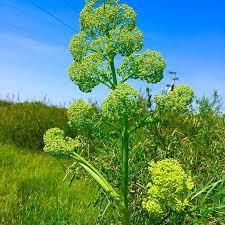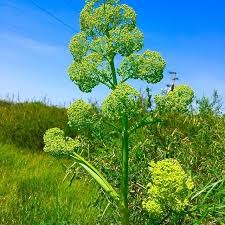Area
Kovrak glue-resin has long been produced and used in Iran, Afghanistan, Pakistan and India. Preparation of brittle elimination in our country began in 2006. The Kovrak species is widespread in the Caucasus, Central Asian republics, Western Siberia, the Mediterranean, Iran, Afghanistan, Pakistan, China and India. , grows in mountains and foothills, on clean soils.
Botanical description of the plant
The Kovrak (Ferula) family is a perennial herbaceous plant belonging to the family Apiaceae (Umbliferae). There are more than 160 species of Kovrak on Earth, 104 species in the Central Asian republics, and more than 50 species in Uzbekistan. The locals call it sassik kovrak, rova, ravshak, kamol, murcha kamol and other names depending on the different types of kovrak. There are 10 main types of resin glue used, such as foul fracture, rova, mountain fringe and other names, these species are very similar in appearance morphologically, but in nature foul fracture (Ferula assa-foetida) is common. The resin-glue produced in the republic and delivered to consumers is mainly of this type. Kovrak reaches a height of 1.5–2 m, the root is up to 15–20 cm thick, located deep in the beets. The plant stem grows and blooms once every 8-9 years — monocarp. The stem is erect, thick, branched at the top of the hollow inside. The rhizome leaves are banded, separated three times. The leaf segments are oblong, or lanceolate. The leaves on the stem are small, the outside is covered with a lot of feathers, and the stem is lined with hairs. The flowers are gathered in a complex umbrella. The flower is pale yellow, without cups, the crown is 5, the paternal is 5, the maternal node is two-chambered, located below. The fruit is a two-piece grain. It blooms in March-April, the fruits ripen in April-May. The aboveground parts of the plant live 1.5-2 months, depending on the growing environment and weather conditions.

Medicinal properties
Kovrak has long been used in folk medicine for the treatment of malignant tumors and ulcers, an alcoholic tincture of the resin extracted from it is used in asthma, stroke and nervous diseases. In scientific medicine, brittle glue-resin is used as a powder, emulsion and alcohol tincture (assa foetida) as a painkiller and sedative, and is included in the pharmacopoeia of many countries. From the countries of the East, in Iran, Pakistan, India and Afghanistan, brittle glue and its root are used as a spice in cooking, in the manufacture of perfumes in the cosmetics industry. The composition of the glue-resin used in medicine consists of essential oils, organic sulfides, pinene, coumarins and other compounds that give it the smell of garlic. Kovrak glue-resin is used in folk medicine for the treatment of varicose veins, pulmonary tuberculosis, plague, ulcers, whooping cough, toothache, nervous and other diseases, as well as as a tonic, expectorant and anthelmintic.
Growing technology
Extraction of glue-resin from the root of kovrak begins in early spring and lasts until autumn. Therefore, the resin extraction periods are divided into spring and summer. To do this, dig around the rhizome root to a depth of 5–10 cm and a width of 20–25 cm, and the top of the root is opened. Once the top of the kovrak root is opened, it is cut to get the glue-resin, after 5-6 days the quality glue-resin juice is collected and the collected glue-resin is collected. Suddenly cut again from another place, during the season the plant is cut 15–20 times, depending on the size of the root.





